#Indian movie 2011
Text
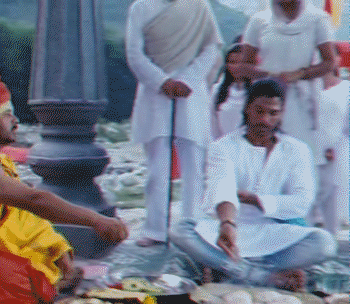
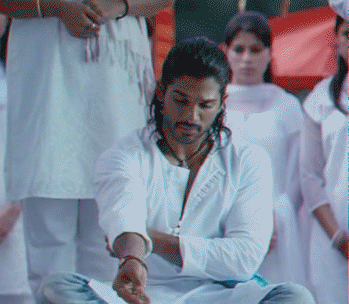
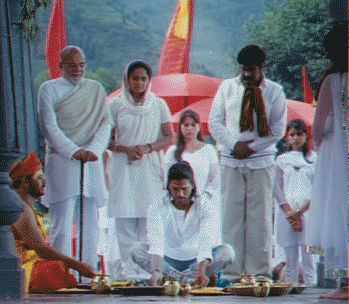

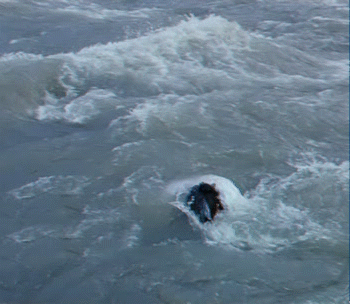

#Badrinath#Badrinath movie#Allu Arjun#Indian movie 2011#Badri#Stylish Star#Tamannaah Bhatia#Alaknanda
13 notes
·
View notes
Text
By Vidya Krishnan
GOA, India — My niece was just 4 years old when she turned to my sister-in-law in a packed movie theater in Mumbai and asked about gang rape for the first time.
We were watching the latest Bollywood blockbuster about vigilante justice, nationalistic fervor and, of course, gang rape. Four male characters seized the hero’s sister and dragged her away. “Where are they taking Didi?” my niece asked, using the Hindi word for “elder sister.” It was dark, but I could still make out her tiny forehead, furrowed with concern.
Didi’s gang rape took place offscreen, but it didn’t need to be shown. As instinctively as a newborn fawn senses the mortal danger posed by a fox, little girls in India sense what men are capable of.
You may wonder, “Why take a 4-year-old to such a movie?” But there is no escaping India’s rape culture; sexual terrorism is treated as the norm. Society and government institutions often excuse and protect men from the consequences of their sexual violence. Women are blamed for being assaulted and are expected to sacrifice freedom and opportunity in exchange for personal safety. This culture contaminates public life — in movies and television; in bedrooms, where female sexual consent is unknown; in the locker room talk from which young boys learn the language of rape. India’s favorite profanities are about having sex with women without their consent.
It is the specific horror of gang rape that weighs most heavily on Indian women that I know. You may have heard of the many gruesome cases of women being gang-raped, disemboweled and left for dead. When an incident rises to national attention, the kettle of outrage boils over, and women sometimes stage protests, but it passes quickly. All Indian women are victims, each one traumatized, angry, betrayed, exhausted. Many of us think about gang rape more than we care to admit.
In 2011 a woman was raped every 20 minutes in India, according to government data. The pace quickened to about every 16 minutes by 2021, when more than 31,000 rapes were reported, a 20 percent increase from the previous year. In 2021, 2,200 gang rapes were reported to authorities.
But those grotesque numbers tell only part of the story: 77 percent of Indian women who have experienced physical or sexual violence never tell anyone, according to one study. Prosecutions are rare.
Indian men may face persecution because they are Muslims, Dalits (untouchables) or ethnic minorities or for daring to challenge the corrupt powers that be. Indian women suffer because they are women. Soldiers need to believe that war won’t kill them, that only bad luck will; Indian women need to believe the same about rape, to trust that we will come back to the barracks safe each night, to be able to function at all.
Reports of violence against women in India have risen steadily over the decades, with some researchers citing a growing willingness by victims to come forward. Each rape desensitizes and prepares society to accept the next one, the evil becoming banal.
Gang rape is used as a weapon, particularly against lower castes and Muslims. The first instance that women my age remember was in 1980, when Phoolan Devi, a lower-caste teenager who had fallen in with a criminal gang, said she was abducted and repeatedly raped by a group of upper-caste attackers. She later came back with members of her gang and they killed 22 mostly upper-caste men. It was a rare instance of a brutalized woman extracting revenge. Her rape might never have made headlines without that bloody retribution.
Ms. Devi threw a spotlight on caste apartheid. The suffering of Bilkis Bano — the defining gang rape survivor of my generation — highlighted the boiling hatred that Indian institutions under Prime Minister Narendra Modi, a Hindu nationalist, have for Muslim women.
In 2002 brutal violence between Hindus and Muslims swept through Gujarat State. Ms. Bano, then 19 and pregnant, was gang raped by an angry Hindu mob, which also killed 14 of her relatives, including her 3-year-old daughter. Critics accuse Mr. Modi — Gujarat’s top official at the time — of turning a blind eye to the riots. He has not lost an election since.
Ms. Bano’s life took a different trajectory. She repeatedly moved houses after the assault, for her family’s safety. Last August, 11 men who were sentenced to life in prison for raping her were released — on the recommendation of a review committee stacked with members of Mr. Modi’s ruling party. After they were freed, they were greeted with flower garlands by Hindu right-wingers.
The timing was suspicious: Gujarat was to hold important elections a few months later, and Mr. Modi’s party needed votes. A member of his party explained that the accused, as upper-caste Brahmins, had “good” values and did not belong in prison. Men know these rules. They wrote the rule book. What’s most terrifying is that releasing rapists could very well be a vote-getter.
After Ms. Bano, there was the young physiotherapy student who in 2012 was beaten and raped on a moving bus and penetrated with a metal rod that perforated her colon before her naked body was dumped on a busy road in New Delhi. She died of her injuries. Women protested for days, and even men took part, facing water cannons and tear gas. New anti-rape laws were framed. This time was different, we naïvely believed.
It wasn’t. In 2018 an 8-year-old Muslim girl was drugged and gang raped in a Hindu temple for days and then murdered. In 2020 a 19-year-old Dalit girl was gang-raped and later died of her injuries, her spinal cord broken.
The fear, particularly of gang rape, never fully leaves us. We go out in groups, cover ourselves, carry pepper spray and GPS tracking devices, avoid public spaces after sunset and remind ourselves to yell “fire,” not “help” if attacked. But we know that no amount of precaution will guarantee our safety.
I don’t understand gang rape. Is it some medieval desire to dominate and humiliate? Do these men, with little power over others, feeling inadequate and ordinary, need a rush of power for a few minutes?
What I do know is that other men share the blame, the countless brothers, fathers, sons, friends, neighbors and colleagues who have collectively created and sustain a system that exploits women. If women are afraid, it is because of these men. It is a protection racket of epic proportions.
I’m not asking merely for equality. I want retribution. Recompense. I want young girls to be taught about Ms. Bano and Ms. Devi. I want monuments built for them. But men just want us to forget. The release of Ms. Bano’s rapists was about male refusal to commemorate our trauma.
So we build monuments with words and our memories. We talk to one another about gang rape, keeping it at the center of our lives. We try to explain to our youngest, to start protecting them.
This is how the history of the defeated is recorded. That’s what it all boils down to: a fight between forgetting and remembering.
143 notes
·
View notes
Photo


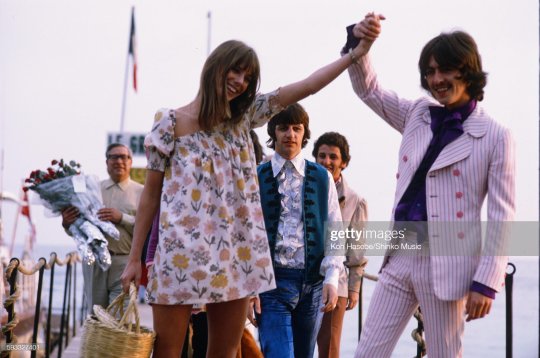

Rest in peace, Jane Birkin.
Pictured here with George, Ringo, Maureen, and Pattie in Cannes on May 17, 1968; photos by by Koh Hasebe/Shinko Music/Getty Images, The Associated Press, Farabola/Bridgeman Images, and REPORTERS ASSOCIES/Gamma-Rapho via Getty Images.
“I remember the mystery that was around George Harrison. I wouldn’t have asked him a question. I wouldn’t have added because of… feeling he… he was onto something else.” - Jane Birkin, Living In The Material World (2011)
“[Director Joe Massot] asked me if I would do the music, but I told him I didn’t write music for films. Then he said that whatever I gave him, he would use. That sounded pretty simple, and I thought, ‘I’ll give them an Indian music anthology, and who knows, maybe a few hippies will get turned on to Indian music.’ […]
Ringo came with me to the [Wonderwall] premiere in Cannes. (I know this because they’ve put out a CD and I’ve read Derek’s liner notes. I didn’t remember it until I saw the photos of us with a rather nice young lady called Jane Birkin who was in the movie.)” - George Harrison, The Beatles Anthology (2000) (x)
#Jane Birkin#George Harrison#quote#quotes about George#quotes by George#Pattie Boyd#Maureen Starkey#Ringo Starr#1968#1960s#Wonderwall Music#Wonderwall Music 55#Harrison songwriting#Joe Massot#harrisonarchive in memoriam#fits queue like a glove
135 notes
·
View notes
Text
Head premiered on November 6, 1968. (Edit featuring the two Tork songs - in the studio and demo versions, respectively - and a line from the movie.)
“What’s happening as time goes on is that the movie [Head] is becoming a chronicle of an age. At the time, it was just a chronicle of the Monkees.” - Peter Tork, The Monkees Tale (1985)
Q: “What do you think of the music from the film ‘Head’?”
Peter Tork: "Well, since I wrote and produced two of the songs myself, I think it’s fine. I did ‘Can You Dig It?’ And ‘[Long Title:] Do I Have To Do This All Over Again.’” - Goldmine, 1982
“The funny thing is that the lyrics [to ‘Long Title: Do I Have To Do This All Over Again?’] came to me right out of the air. I was just playing those chord changes on the guitar, and I opened my mouth and that’s what popped out. The song was weirdly prophetic. I had no idea that was going to be my attitude about anything having to do with music when I wrote that song." - Peter Tork, Listen To The Band liner notes (more about "Long Title..." here)
“‘Can You Dig It’ is about the Tao. The hook line I wrote in my dressing room on the set [of the television series in 1967]. The chords for the chorus I’d written in college, and [they] had just stuck with me.” - Peter Tork, Head box set liner notes (more about "Can You Dig It?" here)
"I think they're ['Can You Dig It?' and 'Long Title...'] the best songs in the movie [Head]. I love both of them. I thought they were just terrific. He had plugged himself into that whole Stephen Stills connection and was working with those guys. I think they fit the movie better than anything did. When those two songs start up in the movie, it comes alive for me.” - Michael Nesmith, Head box set liner notes
“Thorkelson expressed a preference for the Monkees’ ‘Headquarters’ album, because it was the group’s first self-performed album […]. The soundtrack to the [...] movie ‘Head’ also is among Thorkelson’s favorites. ‘It was a little tinny, but back then I guess we were a little tinny,’ he said.
‘That movie will always look good,’ commented Thorkelson.” - The Bowling Green News Revue, May 24, 1979
"'When we made Headquarters, I thought I'd died and gone to heaven,' says Tork. 'My whole goal had been to be a member of a band that worked. The next thing I know we're making a movie and it doesn't have anything to do with the business of being in a band together.' [...] 'There's some weight behind the idea that Bob and Bert wanted to wreck the Monkees, to stop it cold in its tracks,' says Tork. 'I've never known for sure. Bert and Bob might have thought out loud: "Let's kill the Monkees!" Or they may have not thought so out loud but at some unconscious level, they were sick of the Monkees and wanted to do something else.'
[...] 'It was a joy seeing a movie being made, but I didn't like working for Bob Rafelson,' Tork says. 'I did what he told me, but I can't say that I ever had any heart connection with him.' His favorite scene, in which he recounts what he has learned from an Indian mystic, was actually directed by Nicholson.
[...] Tork has seen Head around 80 times but it took him years to work out why it bothered him so much. In the movie, the Monkees are hoodwinked, bamboozled, chased, assaulted, mocked, trapped in a black box and reduced to dandruff in the hair of actor Victor Mature, before ending up back where they started. In the words of the sardonic Nicholson-penned theme tune, 'So make your choice and we'll rejoice/ In never being free.'
'Most people are dazzled by the psychedelia, and that's fine, but for me finally the point of the movie is the Monkees never get out,' Tork says sadly. 'Which is to say Bob Rafelson's view of life is you never get out of the black box you're in. There's no escape.'
So how would a Peter Tork cut of Head end?
'There might have been a scene where we get out,' he says wistfully. 'We jump in the water and get away.'" - The Guardian, April 28, 2011
#Peter Tork#Tork quotes#Davy Jones#Micky Dolenz#Michael Nesmith#The Monkees#Monkees#Head (1968)#long read#<3#Tork songs#Can You Dig It#Long Title: Do I Have To Do This All Over Again?#Bob Rafelson#Bert Schneider#et al#can you queue it
50 notes
·
View notes
Text




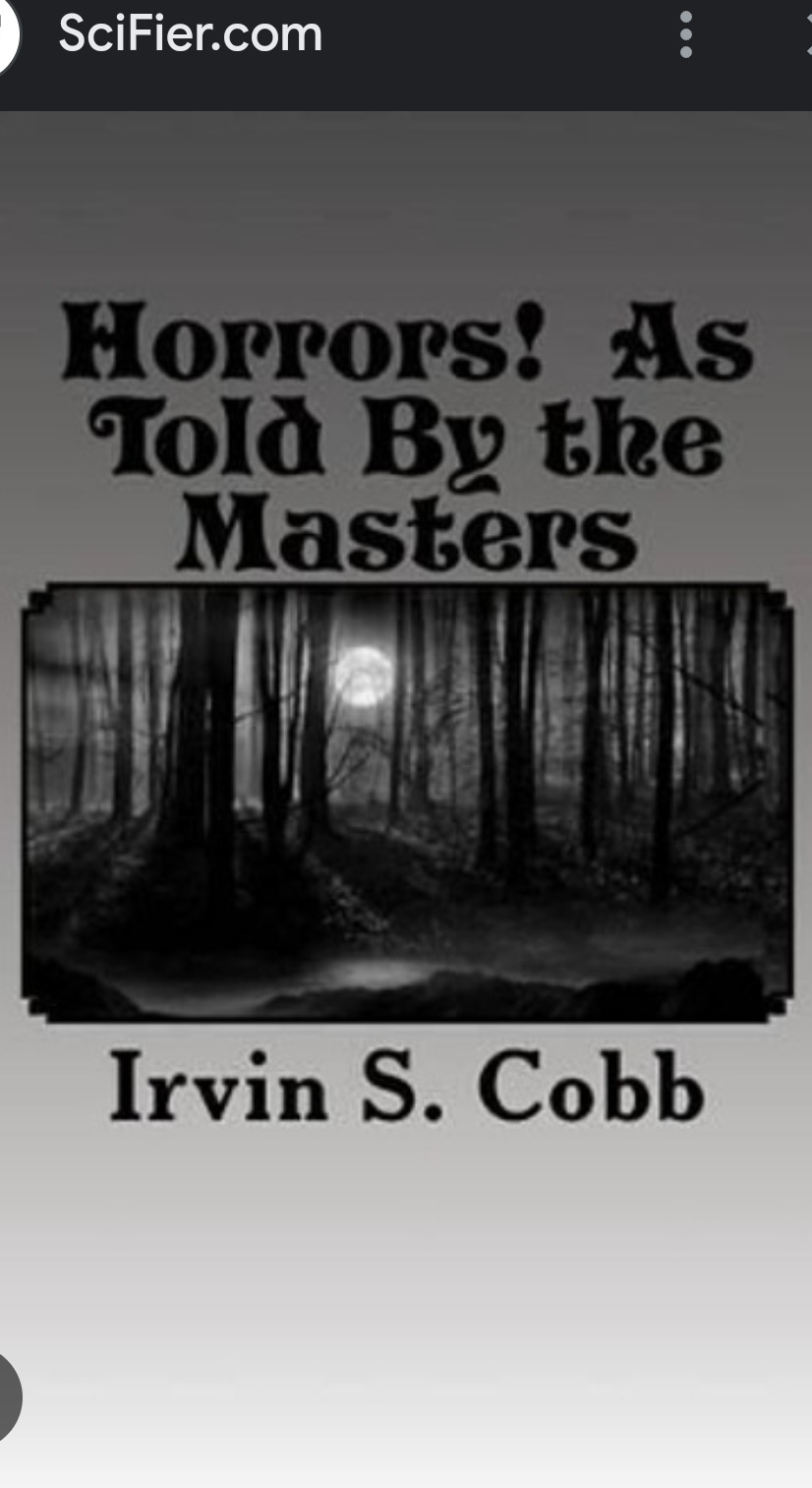
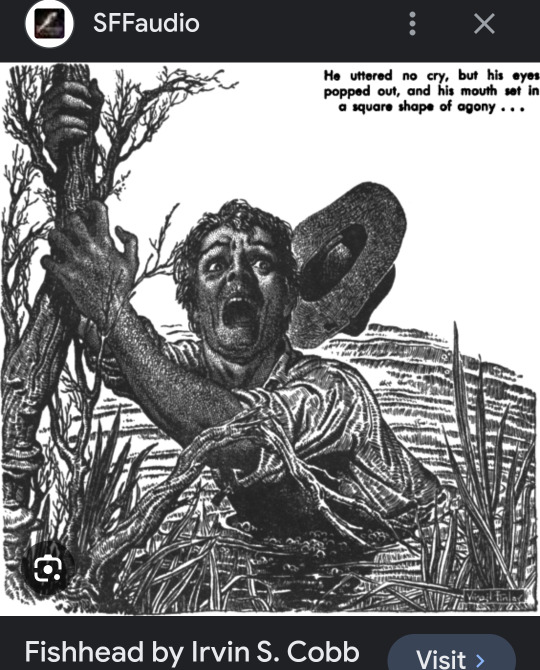
Pics: Inspiring HPL.
1. Irvin S. Cobb - American writer, editor, humorist & columnist hailing from Paducah, Kentucky¹.
He was the highest paid staff reporter on the NY World newspaper².
Irvin would write 60+ books & around 300 short stories.
Some of which were adapted into silent movies. And, 2 of his later tales were actually filmed, by the famed John Ford³, during the 1930s!
2. Cobb's "dark side" (horror works) of the otherwise lighthearted comedian & the story in question.
3 & 4. Comedic frontpieces(?) for books by Cobb. The 2nd even boasts an Abraham Lincoln quote!
5. Cover to Cobb's collection of other authors's short horror tales.
6. Inside art from Fishhead's ending...
1913 Addendum -
Intro: Irvin Cobb's infamous short story "Fishhead" is set in the back- wood bayous of the vast Reelfoot Lake⁴.
Plot: The tale concerns the murder of a local outcast freak by "poor whites."
With its surprise Jaws⁵-like ending, this gruesome work reminds readers of an issue of EC comics⁶!
Criticism: Lovecraft lauded Cobb for, "... Carrying on our (own) spectral tradition is the gifted... humorist, I.S. Cobb, whose works... contain some finely (made) weird (tales)."
Of the plot, Howard stated that, "Fish- head" (is) an early achievement, ... banefully effective in its portrayal of (an) unnatural... hybrid idiot & the strange fish of an isolated lake."
Lovecraft further opined, "It is (my firm) belief... that... few short stories of equal merit have been published anywhere (else)..."
Legacy: Cobb's "Fishhead" is seen as a major influence on Lovecraft's own "Shadow Over Innsmouth."
Robert M. Price⁷ noted that, "What (Howard) found revolting was the idea of interracial marriage (&) of different ethnicities mating, (thus) 'polluting' the (white? human?) gene pool."
Fishhead is supposedly "the son of a Negro father & a halfbreed Indian mother." It's never mentioned what her other half was from...
This is the same premise behind HPL's "The Shadow Over Innsmouth."
Except that Lovecraft calls them Deep Ones & has a whole city that's been 'turned'...
More when we get to this story...
Notes:
1. Paducah, as 1 out of 9 U.S. Creative Cities, is a haven for thinkers, artists & creators!
Architectural Digest recognizes this city's historic district as 1 of the most beautiful main streets in America.
There are 20 downtown blocks listed in the National Register of Historic Places!
Weird Shit: Paducah's nickname is "The Atomic City."
This was because it was once the U.S.'s only uranium plant, making atomic bombs for our Defense Department...
2. The NY World newspaper began (in 1860) as a leading voice for the US Democratic Party.
But, once under Joseph Pulitzer, it became a pioneer in "yellow journalism."
Catching readers's attention with sensational (sex, sport & scandal) news stories.
This raised their circulation past the 1 million mark!!
Best known for being among the 1st to publish daily comic strips.
They actually created "Hogan's Alley", "Everyday Movies", "Little Mary Mix- up" & "Joe Jinks!"
Merged with The NY Telegram in 1931.
Revived - online - in 2011 by Columbia U. But, hasn't had any new content since 2016...
3. John Ford was an American movie director who won Oscars for "The Informer", "The Grapes of Wrath", "How Green Was My Valley" & "The Quiet Man."
The best of his many Westerns are "The Searchers", "Stagecoach" & "My Darling Clementine."
4. Reelfoot Lake is a real lake best known for its shallowness - about 5½ feet on average.
It's located in western Tennessee &, strangely enough, no swimming is allowed there...
The lake is named after an 1800's Chickasaw warrior with a deformed leg...
Reelfoot Bayou, with its cypress trees, flows out of the lake to join the Obion River - which runs straight to the Mississippi.
5. "Jaws" is, of course, director Steven Spielberg's 1st international master- piece.
And it doesn't need any hype, from me, for you to see it again!
97% on Rotten Tomatoes!!
Enough said...
Make it so!
6. E.C. Comics was an American publisher specializing in horror, crime, dark fantasy & sci-fi comicbooks.
William Gaines printed mature tales of war, adventure, satire, etc...
Noted for its stories high quality, shock endings & progressive social awareness.
Among the themes that EC creators touched upon are: racial equality, anti- war sentiments, nuclear disarmament & even early environmentalism!
Sadly, official censorship forced EC to focus on its "Mad" magazine - which became it's greatest success!!
EC has just been revived, by Oni Press, on this past February of 2024!!
Good times guaranteed...
7. R.M. Price is an American biblical scholar, author & an authority on H.P. Lovecraft.
His works include: "Deconstructing Jesus", "The Reason Driven Life", "The New Lovecraftian Circle", "World War Cthulhu", "The Disciples of Cthulhu", "Arkham Detective Agency", "The Da Vinci Fraud", "The Apartheid State in Crisis" & more great stuff!!
Price was the editor of the greatly lamented Crypt of Cthulhu, Midnight Shambler & Eldritch Tales fanzines.
He even edited a whole series of Mythos anthologies for Chaosium.
Today, Price is editor of The Journal of Higher Criticism!
Busy little tentacle, ain't he...
12 notes
·
View notes
Text
'Progressive' hindu nationalists - why are they Like That?
Tomorrow is the 26th of January, the 74th Republic Day in India - the day the Indian constitution was formalized and adopted. I thought i'd mourn my fast-fading nationalism on this occasion by kinda airing out some bullshit and starting a political longpost, which is always a good idea right? right???
Since about the end of last year, I've seen some blogs on here that define themselves around hindutva - hindu nationalism, the idea that India is a hindu nation and must abandon its secular status. Any leftie/liberal with any awareness of the news will know their rhetoric is bullshit. Anyone who isn't really aware of Indian religious dynamics would know to spot their Islamophobia from a mile away, because seriously, the discourse is Ben Shapiro levels of bad.
The most egregious of these include hindulivesmatter, rhysaka, yato-dharmasto-jaya, vindhyavasini and others. Basically a small hindu nationalist clique. They're actually not that big a deal even on this hellsite, but they keep annoyingly popping up to start firebrand arguments under posts. But they're not uncommon in the real world. In fact, i think the majority of the Indian urban youth is Like That - anti-homophobia, anti-misogyny, theoretically anti-islamophobia, the same general left-leaning values associated with Gen Z; but with a weird blind spot when it comes to the fascist decline of their own country.
These users are not too different from TERFs, with their couching of hate in progressive, tumblr-social-justice language. There's been a lot of discourse around why TERFs are the way they are, why their otherwise feminist and progressive values eventually shatter in favour of their hate. I want to do something similar for hindutva tumblr, because i see in it a newer kind of hindu nationalist aggression, yet one that i am very familiar with, as an urban upper-middle-class Indian born into a Marathi Hindu family.
The main question i want to answer is this: why does someone espousing dire Islamophobic rhetoric also sincerely believe in progressive ideas? Why do they not see the contradictions? To do that, we need a little primer in post-independence Indian history.
So, it's often said that Indian democracy was not handed to us; this is not only in the sense that we had to fight for our freedom against the Brits, but also in the sense that there were long deliberations on the exact type of republic we wanted to be. The constitution was drafted, finalized and adopted a full three years after the Brits left. This framing of a philosophical struggle stayed on, throughout the tumult of the following decades.
This is how the modern Indian is taught about our history: Several riots, the Emergency in the 70s, the wars with Pakistan and China, the formation of Bangladesh, the victory at the cricket world cup, the Cold War international policy of non-alignment, the Green Revolution, all of these are presented through a frame of struggle, with the Kargil War and the 1991 liberalization being the point of stabilization. The median citizen of 1971 was politically aware and politically involved. That of 2001 was most likely not. At least, that's the narrative of capitalism in the country. This narrative of a 50-year prolonged post-independence struggle is why Indian nationalism is so potent, even outside of the newer Hindu fascist rhetoric. We've got a very intense sense of national pride. I'm guilty of it myself.
In 1991, the economy was opened up to multinational corporations
and eventually led to the formation of an Indian petit bourgeois. The
period from 1991 to roughly 2011 is seen as a period of idyllic peace
much like the Clinton administration in the US. Culturally, this was the time of the Bollywood masala movie - light, apolitical and all about a big Hindu joint family that preaches benevolent unity of all religions. But the thing that was never mentioned in these movies was caste - an elephant in the room that i haven't addressed yet. Just like the 'default' US Culture is white suburban christian, the default culture here is upper caste middle-class hindu. The aforementioned rise of the middle class was largely along caste lines. Households in the US have microcultures along ethnic lines, and they can be similarly mapped in India through caste and religion.
The Indian equivalent of the megachurch pastor is the ruling BJP's paramilitary parent organization, the RSS, as well as others like the Vishwa Hindu Parishad, the Karni Sena, etc - organizations that normal people largely didn't agree with but whose values and morals were ingrained in their subconscious. The apolitical Hindu in like 2004 did not believe, like the RSS does, that India should be a Hindu nation; but he (i use 'he' here because male tends to be default in this case, and that's a whole different conversation) did believe in the greatness of traditions, the Indian armed forces and in ancient Hindu scientific supremacy (which at the time was limited to Aryabhatta's zero and the actual progress in the sciences from ancients like Charaka and Sushruta to more modern ones like Ramanujan and CV Raman - it hadn't gone into cuckoo fantasy land yet, where we showhow had stem cell research and aeroplanes in ancient India and the Ramayana is apparently actual history now). To this person, Savarkar was an icon of the freedom struggle along with others like Gandhi, Bose, Ambedkar, etc, but he didn't know or care about his religio-fascist ideology. Fascist elements existed then and had their pockets of support - the Shiv Sena in Maharashtra, Modi's CM-hood in Gujarat, and the first BJP national administration came up during this time. To the normal citizen, they were simply extremists with 'some good points'.
2008 was the year of the 26/11 attacks in Mumbai. Islamophobia didn't fully enter Indian discourse just yet, largely because of the assertion of the city's multicultural identity, but the seeds were certainly sown. In fact, blatant Islamophobia wouldn't be mainstream till 2016 or so - the BJP's 2014 election was won on middle-class concerns. The petit bourgeois finally made its voice heard politically in the 2011 anti-corruption protests spearheaded by Anna Hazare and Arvind Kejriwal, the latter of whom is the founder of the newest major political party in the country. It's typical of protests of this kind, agitating against a vague idea of corruption with not many tangible demands. It is true that by 2011, the Congress government was notoriously bloated, corrupt and ineffectual at a systemic level. The BJP gained a single-party majority on an anti-corruption and pro-welfare platform, with religion not really a factor.
The middle class celebrated this as an ultimate affirmation of their hegemony, and the RSS-derived values kicked into high gear. The celebrations have now become a gloat-fest, kinda like vindicated Marvel fans when their Disney product makes a bajillion dollars. The best example of this is the Ram Mandir inauguration earlier this week. Modi cultivated an image of a messiah figure who could do no wrong. Anyone who opposed their goals is now an anti-national and a traitor. General attitudes as a whole have grown a lot more bloodthirsty and carceral. Propaganda, degradation of public discourse, weakening of the media and public institutions, the whole gamut.
The people running the above-mentioned blogs are quite representative of this demographic. They probably fully believe what they spout. They fully believe that Hindus and Hinduism are under threat in India, that love jihad ("forced conversion") is a real thing, that Islamists are taking over their nation, and even that Hindus have been 'sleeping' and are just now being 'woken up'. At the same time, they believe in socially progressive values. The supposedly pro-LGBT+ and pro-feminist stances taken by the RSS are very much targeted at urban Hindus, not at the West as PR.
The propaganda directed at them (which includes movies, social media and tragically, many news outlets) often appeals to the traditional acceptance of queer individuals in mythological texts to get straight, cis, sheltered urban Hindus of all ages to reconcile bigotries and get on board the hate train. It is often in a comparative frame, juxtaposed with the bigotry in Islamic or Christian texts and historical persecution in the West (btw, the term acceptance is very loose here, they often equate mention of a thing with acceptance of that thing even if it's derogatory. Ancient hindu culture only 'accepted' trans women, and that was a marginalized acceptance at best).
The RSS often preaches that Hinduism is the religion of tolerance, and advocates for a twisted version of the tolerance paradox. It's reached a level where propaganda doesn't have to be deliberate - the citizens will do it for them. These blogs are true believers despite the contradictions, but their online activity is probably a deliberate form of praxis, with the co-opting of social justice vocab and appealing to white/western/Indian expat guilt etc. So yes, very much like TERFs, except that TERFs are an actual minority whereas Hindutva ideology is increasingly the default 'apolitical' belief. The reactionary internalization has been successful.
Tl;dr: people like hindulivesmatter are sincere in their bigotry towards Muslims as well as their progressive beliefs, because Indian culture as a whole oriented itself towards appealing to the urban upper caste middle class.
#india#hindutva#religious jingoism in india#islamophobia#hindu nationalism#fascism#grumbles rambles and rants#this was partly written as a way to occupy myself while avoiding family during the temple inauguration#cause everyone turned into bigoted zealots#sorry for the overlong tangents and parentheses
9 notes
·
View notes
Text
Following is a post i came across on facebook and i thought i should share it here please read it...
TRIGGER WARNING: ABUSE, SEXUAL GROOMING
It has been a strange couple of days. A professor from an esteemed University in Calcutta was called out for sexual abuse and within 72 hours, another professor died by suicide. It is like just when the discourse of power being dangerous, and blind reverence toxic was taking the centerstage, it was hijacked by a sea of obits, outlining all the ways a man has changed the lives of countless students.
I must put this out as a disclaimer that I was not taught by him neither was I a student at xx. I’d like to believe he was every bit as good a teacher as so many people are professing. I was in xxxx University though and xxxx did teach me. So did a lot of professors who are still part of the present Xxxxxx University English department faculty. To say that the last couple of days have been triggering would be to put it too mildly. It has been a nightmare that has punctured my work, disrupted my sleep and peace of mind. Because, suddenly, what me and my friends would talk about in close quarters are out in the open.
I belong to the 2011-2014 batch of xxxx University. I also did my MA in English from there. Back when I studied, there was a professor who was every bit as cool and student-friendly we read about in book and watch in awe in movies. He would chat with us after class hours, have lunch and endless cups of cha with us, drop all filters and share stories of his personal life with us. He was a friend.
Over the course of my time at xxxxxx my friend and I became close to this professor. We would chat all the time, spend every weekend at his house. To us, he represented what we did not find in our parents and peers. He was liberal, eloquent, and possessed a morality which he himself had defined. He flamboyantly told us how he could - and had - sleep with any woman he wanted to. And we, in our early 20s, took it as a trademark of charm. For three years, he was one of the closest friends I had on campus. No topic was off-limits.
We remained friends till much later. I completed my post graduation from xxxx and relocated to Delhi. Later, in 2016 he met me in Delhi. At xxx, specifically. I was alone with him in a room and following a heartfelt conversation, he forcibly kissed me. At 24 then, my only defence was, “I have to leave.”
By then our association had run too deep. I knew he was ‘this’ person…”wicked, charming, flirtatious”. I convinced myself that he was just being himself and pushed it at the back of my head. He pretended it never happened, so did I.
Two years later, my friend and I recollected our time in college. We spoke about everything that had happened to us while we both changed cities. This was close on the heels of the #MeToo movement. By now we had a vocabulary for abuse, some recognition. We realised the professor had actually spent years grooming us, a terminology Indian educational sites neither talk about nor are familiar with. If you check online, the definition reads: “when someone builds a relationship, trust and emotional connection with a child or young person so they can manipulate, exploit and abuse them.” This is precisely what he had done.
I understand that whatever happened with me did when I was technically no longer his student. And, for argument’s sake, I was an adult. But abuse hits in retrospect and age is hardly a signifier of age. Imagine, an older, more powerful man slowly alienating you from others in your class, spending years convincing you that you are special enough to be his friend. That this lifestyle is conventional, rational. It is not. It took me many more years to admit to myself and the courage of someone else speaking up to write all this. I expect to achieve nothing out of this. I just want to sleep better knowing that I did my bit in sharing my experience and that those who are in the universities will be less naive than me and my friend was. Also, let me assure you he has done worse both on and off campus. But that is not my story to tell.
14 notes
·
View notes
Text

If you think you know who the famous British comedian “Mr. Bean An Indian father and a British mother, they married in New York City on February 5, 1990, and have two sons. In general, the man keeps his personal life secret from the public.
Here are 10 of some little-known and interesting facts about this great British actor:
1- A very educated man. He is a graduate of two universities, Newcastle University and Oxford University. His university thesis was about self-control systems. During that period, he began to develop the character of Mr. Bean in his mind, and perhaps the matter had something to do with psychology.
2- When he was a student at Durham Charterers School, he was a classmate of Tony Blair (who served as Prime Minister of the United Kingdom from 1997 to 2007).
3-One of his greatest passions is cars, and he once said that one of the best moments of his life would come if he obtained a first-class driving license to drive a truck.
4- He is also proud to own an impressive collection of fast cars, including Aston Martin, Honda, Audi and even a McLaren F1.
5-He had two accidents in his McLaren F1 car, the second in 2011. It was very serious, as he collided with a tree and broke his shoulder. The car was severely damaged. It was the first accident of its kind in British history in which the insurance company issued a bill of one million pounds sterling.
6- Sometimes, Atkinson writes articles for some British car magazines, such as Cars Magazine.
7- In his normal life, he suffers from some stuttering in speech, which has made him withdrawn in his personal life, and he does not much like public interviews, as Mr. Bean hardly speaks to people. His problem is especially with words that begin with the letter B, and this is the reason why he pronounces his name in a strange way.
8- He loves James Bond very much and is considered one of his biggest fans. He even got the opportunity to play a supporting character in the James Bond movie “Never Say Never Again” in 1983 with Sean Connery.
9- During his great artistic career, actor Mr. Bean earned significant money, and his current wealth is estimated at about 85 million pounds sterling (about 130 million dollars).
Mr. Bean and his wife
10- In 2001, while he and his family were on a vacation trip to Kenya, while the plane was landing, the pilot suddenly fell ill and fainted. Atkinson was able to calmly control the plane for several minutes, before the pilot returned to his normal position, and the plane landed safely.
#mr bean#hollywood#senamhi#across the spiderverse#star wars#succession#super mario#taylor swift#ted lasso#the mandalorian#the owl house#wally darling#welcome home
3 notes
·
View notes
Text
PURE CINEMA❤️❤️

Rockstar (2011) : This is one of the best movies I have ever watched. The way the screenplay was written, Ranbir Kapoor 's performance, it's music, visual storytelling and fantastic direction by Imtiaz Ali , this movie truly ticks every box.
Ranbir's acting was the highlight of this movie. The way he had portrayed the character in different phases is just pure brilliant. And it's music was just a cherry on the top, not a single song is bad and every song contributes to the story.
And Imtiaz Ali has done a masterpiece level of work in writing, screenplay & direction. Some things he tells through dialogues, some through visuals and some things you are left to wonder and think about. He is really one of the best Indian filmmakers till date.
It's really a shame that this movie was not a hit at that time. Perhaps it was ahead of its time or the audience was not ready for this level of cinema. This is the type of work that I could talk about for hours. And this will age reallly fine.
3 notes
·
View notes
Note
1, 2, 5 and 11 for the tea and book ask game, please. 😉🩷
Thanks @missholson for participating!
Tea and Books Asks:
1. What period of history do you enjoy learning about?
Definitely WW2 and Cold War. It started when I saw Tinker Tailor Soldier Spy (2011) based on John Le Carre's novel. I was dazzled by the way the film presented the spy world and the time period in Britain, when there was no clear good West and evil East. I started reading Le Carre's books and then a German Deutschland '83 tv show was running on tv and there came more German shows about WW2, post war period and DDR. I was mesmerized by the German perspective and their critical way of telling stories.
2. Who is your favourite fictional character and why?
I can feel the 🥴 behind this question. Marius De Romanus from Anne Rice vampire novels is the answer. I just feel sympathy for his struggles as a perfectionist to do things right and to fail badly.
5. Do you have a favourite film soundtrack?
I have several favourite film soundtracks and as I chose in Favorite Movie Meme -post La Cauge aux Folles (1978) by Ennio Morricone is quite perfect. Giallo soundtracks in general are amazing.
11. What character archetype or trope is your favourite?
Nasty choices Miss Holson. We discussed about this after @faisonsunreve answers, because this is a though question. The good and the silent ones who doesn't make a big number about themselves (Klaus Hoffmann in Das Boot). The evil ones who have feelings like infatuation (Conrad Veidt in I Was A Spy) or caring (my childhood crush Darth Vader 😂). And the antiheros who pretends to be good but acts badly (Henry Lloyd Hughes in Indian Summers).
7 notes
·
View notes
Text
Coeli's Picks: Weddings, part 1 (Indian Film Edition)
One Dress a Day Challenge
June: Weddings
Indian movies do love their wedding scenes! Here are some more terrific costume examples, in order from the oldest film to the newest. Lots of good men's costumes in this batch.
Hum Aapke Hain Koun..! (1994) / Madhuri Dixit as Nisha Choudhury

Devdas (2002) / Madhuri Dixit as Chandramukhi

Mujhse Dosti Karoge! (2002) / Hrithik Roshan as Raj Khanna

Bride and Prejudice (2004) / Namrata Shirodkar as Jaya Bakshi and Naveen Andrews as Balraj (top); Martin Henderson as Will Darcy and Aishwarya Rai as Lalita Bakshi (bottom)
(Okay, this one isn't technically an Indian movie, being an international co-production. But it definitely belongs with the Indian movies costume-wise.)
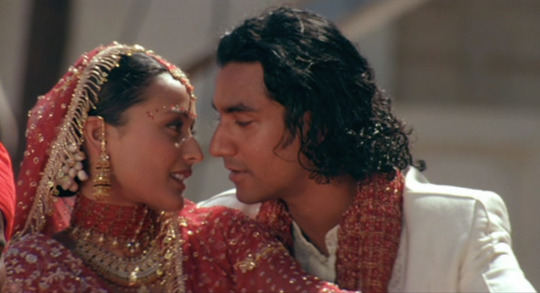

Vivah (2006) / Shahid Kapoor as Prem 'Bholu' and Amrita Rao as Poonam 'Bitto'

Rockstar (2011) / Nargis Fakhri as Heer Kaul

2 States (2014) / Alia Bhatt as Ananya Swaminathan
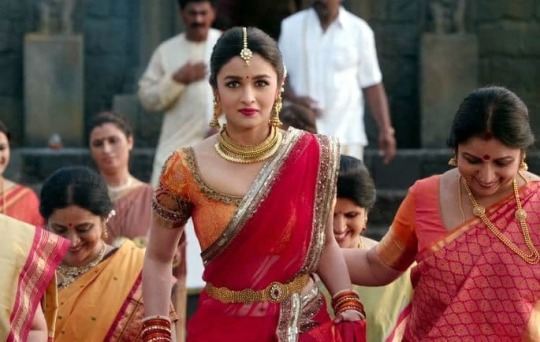
Prem Ratan Dhan Payo (2015) / Salman Khan as Prem Dilwale (or maybe Yuvraj Vijay Singh; he plays a double role and I'm not sure which this is!)
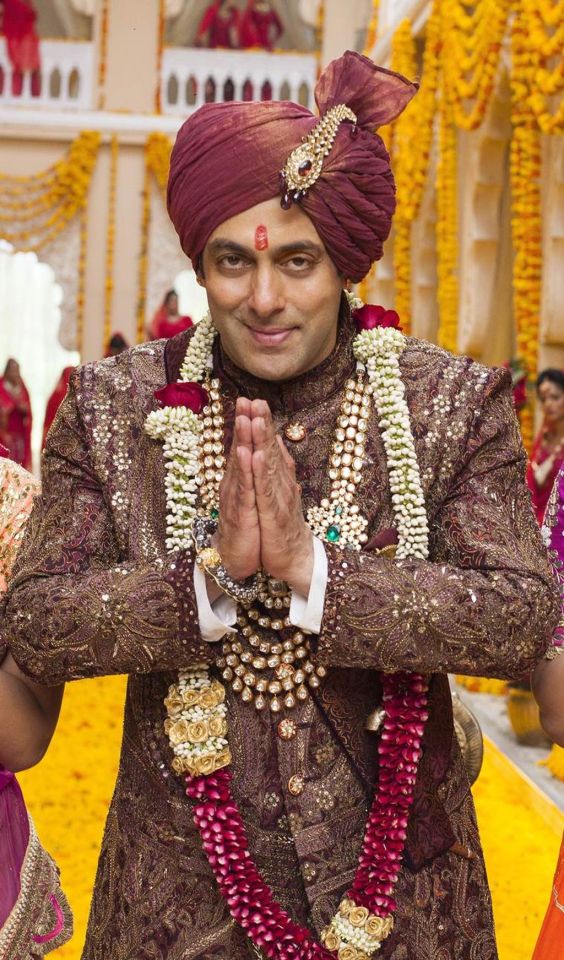
Sonu Ke Titu Ki Sweety (2018) / Sunny Nijar as Titu Sharma
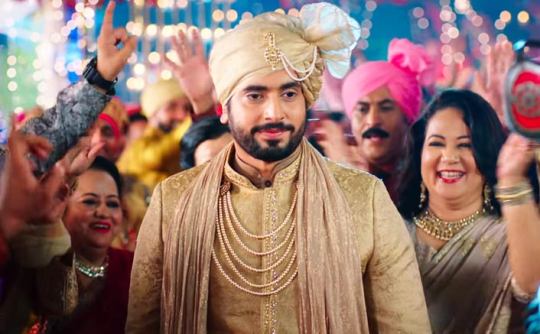
#coeli's picks#wedding costumes#movie costumes#one dress a day challenge#one dress a week challenge#bollywood costumes#indian movies#indian film#indian cinema#wedding dresses#Hum Aapke Hain Koun#devdas#Mujhse Dosti Karoge#rockstar#vivah#2 states#bride and prejudice#Prem Ratan Dhan Payo#Sonu Ke Titu Ki Sweety
14 notes
·
View notes
Photo

George Harrison at the opening of the Apple Boutique, London, on December 5, 1967; photo by Terry O’Neill/Getty Images.
The creation of Wonderwall Music, a series marking the 55th anniversary of the recording sessions - parts 1 & 2:
“I asked George at the opening of the Beatles’ boutique if he would like to do the music for Wonderwall. I told him that it was a silent film and his music would provide the emotion for the characters. Quincy Jones told me that it was the greatest soundtrack he had heard but the movie was too far out for some audiences. It did well in London though.” - Joe Massot (director, Wonderwall), British Beatles Fan Club, 2011
“I said, ‘I don’t know; I haven’t got a guess of how to write music for a movie.’ He said, ‘Aw, we’ve got no budget for the music anyway, so whatever you give me, I’ll have it!’ [...] It gave me a great opportunity. I was getting so into Indian music then that I decided to use the assignment partly as an excuse for a musical anthology to help spread it.” - George Harrison, Musician, November 1987
“I had a regular wind-up stopwatch and I watched the film to ‘spot-in’ the music with the watch. I wrote the timings down in my book, then I’d go to Abbey Road, make up a piece, record it and when we’d sync it up at Twickenham it always worked.” - George Harrison, Wonderwall Music 1992 liner notes (x)
Wonderwall Music sessions in England included the Remo Four...
“There was a bloke who went to school with Paul and I who ended up in the Remo Four, Colin Manley; he was one of those guys who could copy Chet Atkins when he’d be playing two tunes at the same time.” - George Harrison, Billboard, March 9, 1996
The Remo Four’s original song “In The First Place” was recorded during those sessions, and produced by George. Unearthed in 1998, you can hear the song as a bonus track on the 2014 remaster of Wonderwall Music:
“Harrison agreed to release the song [In The First Place] commercially and add it to the director’s new cut of the film. The ex-Beatle requests only to be credited as the song’s producer. Remo Four will be credited as the performer.” - CMJ New Music Report, June 7, 1999
“We recorded backing tracks to accompany certain points in the film. George had timed it all with a stopwatch: ‘We need one minute and 35 seconds with a country and western feel.’ Or, ‘We need a rock thing for exactly two minutes.’ Nothing was really written. We’d talk over ideas he wanted, play something, and he’d say, ‘That’s good, keep that. I like the piano there.’ It was very experimental. The idea was to set an atmosphere.” - Roy Dyke (drummer, Remo Four), The Guardian, March 23, 2017 (x)
#George Harrison#quote#quotes by George#quotes about George#Wonderwall Music#1960s#Wonderwall Music 55#Harrisongs#Harrison songwriting#The Remo Four#Joe Massot#et al#fits queue like a glove
24 notes
·
View notes
Text
Recent books, fiction -
Shola von Reinhold, LOTE - essentially a black queer modernist Possession; I enjoyed it quite a lot. Mathilda, an erstwhile archivist and self-described "Arcadian" devotee of stylish queer figures from the early twentieth century follows the trail of a forgotten black woman modernist writer. I loved Mathilda as a narrator, her unapologetically sensuous engagement with the figures she studies and her embrace of pleasure and style and decadence as sites of both joy and resistance. Like Possession, this includes some razor-sharp and very funny parody of contemporary academic and artistic circles, this time directed mostly towards nihilistic post-modernists; von Reinhold's gaze is very clear on the actual costs of this kind of fantasized negation of the self. I found myself wanting a little more out of the ending in some ways, but over all I loved and definitely recommend this.
Rahul Mehta, Quarantine - [despite our current associations with the title, this book came out in 2011 and is not related to plague or pandemics at all] collection of short stories largely about young gay Indian-American men struggling with various types of feelings of disconnection. Elegantly written and engaging, but sometimes overly detached and repetitive. I would read more by this author.
Rainbow Rowell, Carry On - I think I read this because Jo Walton recommended it on Tor and I hadn't read anything by this author? Anyway, I shouldn't have. The novel is a tepid Harry Potter parody that ends up amounting to bad Harry/Draco fic in which Draco is a vampire. It was stupid and badly written, and I don't care nearly enough about Harry Potter from any angle to be interested. Not recommended, and I will not be trying anything else by this author.
Darry Gregory, We Are All Completely Fine - this is now the third book I have read which takes as its premise survivors of horror movie scenarios coming together in some way (the others were Riley Sager's Final Girls, which I didn't like much, and Grady Hendrix' The Final Girl Support Group, which I had a lot of fun with). I found this one quite moving, though limited by being a novella - there were a lot of problems, especially with the denouement, that I think could have been easily solved in a longer book. Gregory's wife is a therapist (he thanks her in the acknowledgements), and so the therapy group in which all the characters meet is written a lot more believably than most group therapy in fiction (though I would make some different choices than the facilitator!). I was quite moved by the thread throughout many of the characters' stories about their own ambiguous relationship to their various victimizations, the parts of the experiences they long for or miss, the unresolved questions about meaning-making. Some of the characters came off as more full people than others, which I put down to limited space; likewise, there's a (heavily foreshadowed) reveal at the end about the identity of the therapist which I thought could have worked but as it was felt rushed, particularly given the attention to therapeutic ethics earlier in the book. Recommended, though not for everyone.
Richard Wright, The Man Who Lived Underground - posthumously published novella expanding on a previously published short story of Wright's, which I have not read. A black man in Chicago is tortured while under arrest for a crime he did not commit; he subsequently flees into the city sewers, where he undergoes an existential shift in the experience of being proximate to but apart from human society. This was beautifully, vividly written; the sections describing our protagonist's solo journey through the sewers and the way he makes sense of what he hears and witnesses from the lives of the people around him will stay with me a long time. The novella is published with an autobiographical essay from Wright about his grandmother's religiosity, which inspired him to write the book; this essay was interesting in itself, but I felt that the novella stood well without it.
Emily Carroll, Through the Woods - collection of graphic gothic horror short stories (graphic like graphic novel, not graphic like explicit - unwieldy turn-of-phrase). Carroll's art is gorgeous, and I enjoyed it a lot despite graphic fiction not working well for me. The stories themselves are slight and often could use more development and explication, but I am still glad I read this. Very good to read on a rainy autumnal day with some tea, which is what I did.
Gaile Parkin, Baking Cakes in Kigali - Angel, a middle-aged Tanzanian cake baker now living and working in Kigali, Rwanda, runs her business while trying to be a decent person and support those in the community around her. This was a beautifully gentle, optimistic novel that held a lot of space for the complexity of Angel's social world and treats the moral choices she has to make her day-to-day life as worthy of serious consideration (her musings about under what circumstances she would take a moral stand of refusing to serve a customer was a good example). At some points throughout the book I was worried it would land too shallowly on serious topics, but it came through and won me over. And I loved hearing about how Angel sold her cakes.
Caroline McKenzie, A Year of Ugly - a family of undocumented Venezuelan immigrants living in Trinidad deal with a madcap series of adventures with blackmailers while a romance plot line happens in the foreground. I didn't like this; its humor felt cruel to me, and the tone in sections about sex work or the female characters' sexuality felt very sour. McKenzie has an author's note about she was trying to write about serious experiences of her community in a more light-hearted way, but the contrast with Baking Cakes in Kigali, which ostensibly had the same aim but handled it with gentleness and humanity, was stark. Not recommended.
V. C. Andrews, Flowers in the Attic - yes, I'd never read it before! It was at the library, and I thought it was finally time. It's a fascinating book - the use of detail which at once feels fetishistic while also reminding me of older children's novels (compare the Dollanganger children cleaning up the attic with the protagonists of The Boxcar Children in their titular makeshift home); the contained extremity of the gothic melodrama; the fantasmatic alternation of confinement and expansiveness in the use of space. I wouldn't say it's good, exactly, but I'm glad I read it. Probably won't read the sequels, but will be thinking about it for a long time.
23 notes
·
View notes
Text
Brilliant Con Artists in Indian Movies
Dolly Ki Doli (2015)

We all only hear of girls being money diggers by sceptical mothers and mothers-in-law, but the main character in this film made it her profession and got a kick out of it. Starring Sonam Kapoor as Dolly, the girl running marriage scams in the towns of North India, it entails her getting married to potentially well-off boys and then running away with valuables on the first night of their marriage. From wealthy landlord families to simple-minded business owners, she loots them all and disappears with her fake family. When a police officer catches up to her antics after a few prominent families, he plans to set a trap for her to fall into.
A fresh idea for the serious commitment that marriage is believed to be in India, this film was entertaining to the end of how she played her part well. While Sonam Kapoor is not well received through her work, this film was exemplary with a few other films. The idea was novel to me when it was released, I nevertheless believe it is easy to get away with a similar scam, as marriage is a sensitive and elaborate process between families with not many serious qualifications needed. While it is a light-hearted film about a charming con girl, marriage scams are authentic leaving its victims with serious consequences.
Ladies Vs Ricky Bahl (2011)

One of my first films on con artists, this film too glorifies the illegal profession. With Ranveer Singh as the lead, we first see him scamming a girl to fall in love with him while convincing her father to buy his property from a fake owner. We then see him run a painting scam with a businesswoman, only for her to get conned by him. In her rage at being fired, the businesswoman teams up with other women conned by the same man and plans revenge to get back their money.
Having presented the same topic in college, I stand by my statement, that India is one of the top ten on a list of countries with the most frauds and scams. This movie was charming, convincing us of how good-looking he was that we almost forgave him for his crimes. But in reality, this film, however unintentional, glorified the actions of a con artist. It was one of my favourite films to rewatch, and it still is, not just for the story but for the empowered victims and gave them a course of action. While the tactics are hard to replicate in reality, the film is still entertaining.
Players (2012)
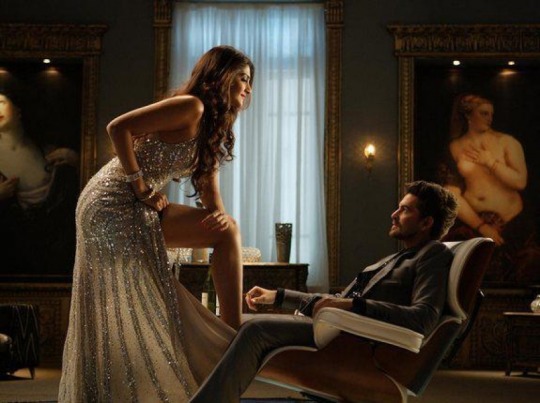
Another classic in this list, this film has a brilliant execution of their elaborate plan of subjective justice for their lives. Initially planning to steal gold with a unique team of individuals, the film spins out of trajectory when their plan goes unfinished. The film then picks off from a different perspective, and with every turn in the movie we zoom out to see that there was a bigger picture than the one we saw before and believed. The film was mindblowing with the nuances added to the plot that made it gripping every single time, and with stereotypes that were not all that unique but still had humane characters.
Having a specific aesthetic through the direction and actors that were skilled and very specific to the character roles, this film is entertaining and compelling until the very end. Being over a decade old, it might initially seem cliche for today’s standard and yet it has a timeless value repetitively ingrained throughout. The film focuses heavily on loyalty and doing right by what is morally expected of someone, even though it is a conflicting topic in this genre of the film. ‘Players’ was thrilling with a sense of humour while keeping us on the edge of our seats on what could unravel next.
Vaastu Prakara (2014)

One of the first films by Rakshith Shetty, this film is a bag of laughs and drama. While conning is not the leading theme here, it is ruled by romance and them deceiving one family for their own reasons. Two men come together for a profession deeply dependent on faith and indigenous science, though their beliefs are inconsistent for the same. With a job that brings romance to one and work to do for both, they both go on a trial of their skills.
With seasoned actors like Ananth Nag and Sudha Rani, this film is an amusing punch. It is easily a family watch despite the romance and the humour. It also highlights the generational gap most people experience with their parents and children. With a controversial director, this film had its fans and critics having unique opinions, but I’d like to point out they only presented a perspective, not the reality.
Roy (2015)
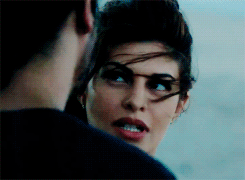
Creating enormous buzz when it came out, this film was a paradox to the audience until someone dissected the storyline to make it sensible. With enchanting directions and captivating actors playing enigmatic characters, the storyline makes sense but somehow leaves a vital dot that needs to be connected that suddenly makes sense in the very end. It starts with a story of an art thief falling in love and changing his direction with another parallel of a filmmaker who meets a captivating woman and connects with her. The rest of the film takes us on a journey that none of us can predict.
With its enchanting music, dreamy visuals and ensnaring plotline, this film is one for an evening that requires contemplation on the experience it was. While the story is not original or unique, the narration and direction of the story makes it distinctive. Somewhat appearing to break the fourth wall of the cinema, this film gives a perspective peek into the lives of the storytellers we regularly consume from.
Special 26 (2013)

Based on a real story, this film entails the time of individuals fraudulently posing as government officers and raiding corrupt politicians and local businessmen. Getting away with it was the easy part, with them being quickly followed and chased by the legal government officials, fleeing them in minutes and having a solid system. It was based on the heist in 1987, where they even interviewed the people for the heist, making it seem like they were actual officers, involving real police authorities for support during the raids.
This film was an enormous success in the theatres and the television when it was released, well-known for the story and the work of prominent actors. While the film seems like an adaptation of a Robin Hood figure, taking black money from corrupt individuals, the money does not flow out to the people as the original story goes. The brilliant execution of the raids, the plot twists and the stunning performance by the actors are unmatched. With a very Indian touch to the film theme and the art of conning being perceptible from the beginning, this film is exceptional.
Drive (2019)

With distinctively bad ratings, this film is a good watch for the first time. Starring Sushanth Singh Rajput and a few other stars from Bollywood, it was refilmed several times to fit into the genre of OTT Platforms. The film starts with a buzz, a corrupt politician hiding her money in the Rastrapathi Bhavan only to hear rumours that it could be stolen by the “King”. With steep conflicts and two officers dispatched to dissolve this situation, the film pans to a group of individuals dabbling in illegal car racing who encounter another mysterious character who offers help with everything and nothing.
With innumerable plot twists and characters revealing their identities layer by layer, this film is mind-boggling and undeniably fictional. The film is like a meld of Dhoom and the Race series, with cliche themes of adrenaline pump and complex characters coming together for the impossible. While the mix is not invalid, somehow the film does not pack the punch either series did. The chase is thrilling, and this film is absolutely recommended to people who love the adrenaline rush. The car races are the icing of the film.
Operation Alamelamma (2017)

A truly underrated gem from the Kannada film industry, this film was hilarious with an excellent plan that was successfully executed. The film starts with a simple man who casually picks up a luggage bag on the street only to get hauled into a kidnapping case making him the prime suspect. Claiming to have picked the bag out of curiosity, the man ends up on a road trip with the police officials scrambling to find the son of a businessman. The story has flashbacks and unique characters, everything coming together in the end with an unimaginable tale.
I was enamoured by this film, not having seen anything like this in any other films of any language. The characters not being con artists in reality, the film is ingenious and out of the ordinary. With nearly all the actors being underrated, the reception was limited amongst the audiences with barely any fame, making it a hidden jewel. The language and setting are local to South Indians and could be a fresh perspective to the prospective global audience. Having very down-to-earth characters and a story that leaves us speechless, this film is like no other.
Race series (2008, 2013,2018)

The first Race film was groundbreaking setting standards high in the con artists and heist experts genre of films, with the second film surpassing the first film with the buzz created. With nearly terrible ratings for the third film, I promptly ignored its existence while rewatching the first two. The film mafia groups, complex familiaes with hidden crimes and agendas, and a plottwist to leave us all in shock. The first film came with a lot of twists and turns, mostly involving family drama between two ambitious brothers. The second film features one of the said brothers and he many heists he gets involved in with a very well-known business tychoon to make money.
Being very young when I first watched both the films, the adrenaline rush and the exciting plot left me entalled in its brilliance. Having rewatched it recently, I can certainly find plenty of faults in the films, but nonetheless, it is fast paced and takes us on a race to the end with the exhilaring story. The films are creative thats for sure, but the characters never seem to evolve which is both good and bad for the story. Race was always a classic in this genre of films, with con artists living the best life while also having incredible music, and each of their entrances with alluring romances.
Dhoom series (2004, 2006, 2013)
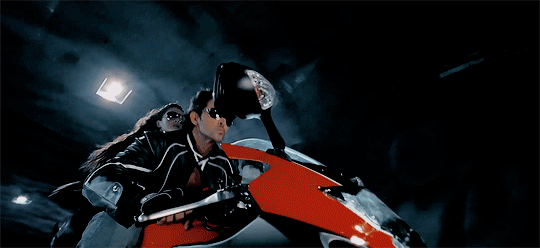
If anything could beat the Race series in its brilliance, its these three films. While the Race series highlighted the cons and the heists from the perspective of the con artists, these three films takes a wider shot including the storyline of the infamous two cops in the three films while also letting us in on the con artists lives behind the crimes. The thieves here are called just the ame and pan out from just India to South and North America with the crimes being greater than the one featured before.
The first film involves heists that are local but frustrating enough to the police officials who are unable to catch them on their own, having to bring in special officers to deduce the mind of this unique crime group. The second film however brings in an artistic persective to the tale with the con artist not just being excellant at his job, but also being a master of disguises. The last film involves Aamir Khan taking the stage as a circus entertainer, brought by his father in the same profession sworn to revenge for a bitter past and brilliant plans for the American Banks.
The plots were incredible, unique to each con artist and with endings that are unpredictable every time. The films have stayed imprinted on my mind from a young age, and while it glorifies the crime it also show us the incredible amount of commitment and hardwork that actualy goes behind it. With visuals that blow our minds and avant-garde technology, the films are sure to blow our minds and leave us reeling for more.
#dolly ki doli#sonam kapoor#saif ali khan#con artists#con artist#confidence tricks#confidence man#con man#scams#scam#faud#fraudster#fraudsters#illegal#female manipulator#male manipulator#manipulation#hindi movie#hindi film#movie#movies#film#films#kannada movie#kannada movies#rajkumar rao#pulkitsamrat#rajkumarrao#ladies vs ricky bahl#ricky bahl
11 notes
·
View notes
Text
Fandom Fic Rec: Throwback Edition
Tagged by @blackestglass
Choose 5 fandoms you are no longer active in (as in actively participating/creating in), and then choose 1 fic for each fandom that's stuck with you. Tag 5 people when you're done!
1. The End of the World by FernWithy and sequels (Hunger Games, Haymitch/Effie)
I don’t consider myself a Hunger Games fan. I consider myself a The End of the World by FernWithy fan, and that it incidentally happens to take place in the same universe as The Hunger Games is incidental. I came to these fics having not read anything in The Hunger Games, having only watched the first Hunger Games movie to give me any familiarity with the characters and the stories, and absolutely fell in love. FernWithy has written six full novels and three interstitial novellas clocking in at nearly a million words to tell the story of Haymitch Abernathy (and Effie Trinket) from age 16 to adulthood and they are masterful. Her worldbuilding and plotting are top notch and her ability to mimic the styles of other authors is superb. (I came to know FernWithy through her Harry Potter fanfiction, which is about as stylistically different as it is possible to be.) I come back to reread these once ever few years.
2. Yggdrasil Dreaming by Barkour (MCU, Sif/Loki)
Ah, Sif/Loki, my beloved ship of yester year. This was the fic that really got me shipping them and I never looked back. It goes so hard with the dream imagery and the mythic storyline that draws a lot from Norse myths. The characterization is absolutely top notch, and Barkour has the most gorgeous lyrical prose I’ve ever read. This provides an alternate (ie, written pre-Avengers) take on Loki’s storyline post Thor (2011) and is absolutely beautiful.
3. Cowboys and Indians by Minisinoo (Twilight, Gen Fic Jasper & Leah)
Taking a page out of Trish’s book and rec’ing a fic by Minisinoo. This is what I think of when I consider a fanfics power to be transformative. Obviously the big glaring problem (of many big glaring problems) at the center of the Twilight series is the treatment of the Quileute Tribe. This takes that premise and turns it on its head and creates a deeply poignant metaphor for the relationship between white people and Natives in the offering. Minisinoo is Native (though not Quileute) and the perspective offered in this bit of fanfic is fascinating as it explores an unlikely friendship between a former Confederate soldier turned vampire and a 21st century Native woman turned werewolf.
4. Cutting Water by NessieGG(Naruto, Neji/Tenten & Sasuke/Sakura)
This is basically a wuxia AU and... what a knockout premise for an alternate universe, frankly? This reads like a Chinese fantasy drama in all of the best ways. Technically it’s a Naruto fic, but also I don’t know that you need to know a thing about Naruto to enjoy this. This is high drama, with lots of adventure and action and factional politics with no side necessarily being completely wrong. I love the worldbuilding, and I love the two romances which both are quite distinct and interesting!
5. Baiting the Beauty by @glamaphonic (Game of Thrones/ASOIAF, Jaime/Brienne)
Technically it’s unfinished, but only by a few chapters and still absolutely worth a read. Jaime/Brienne Regency AU in the style of the Regency Romance Novel. This is pure romance novel tropes in the best ways. Brienne makes such an excellent unconventional heroine, a wallflower through and through, and Jaime absolutely fits the role of the rake. The rest is all enemies to lovers and sexual tension and uncovering one anothers hidden hurts and furtive misunderstandings. As befits George RR Martin’s reversal of the Beauty and the Beast trope, they fit the roles of hero and heroine of a romance novel perfectly, and yet they are still recognizably Jaime and Brienne.
6. Mass Effect: Discovery by @pigeontheoneandonly (Mass Effect, Shepard/Kaidan Alenko)
Bonus sixth rec because while I still consider myself in the Mass Effect fandom this fic rearranged my entire brain and I still think about it constantly since I read it. This is a narrative retelling of Mass Effect 1 (with a WIP sequel telling the story of Mass Effect 2) with Shepard/Kaidan as the main pairing. And the characterizations in this are absolutely fantastic. There is a tendency in Mass Effect fanfic to idealize Commander Shepard a bit (owing both to the game idealizing them and their placement as player proxy) that this fic elides. Nathaly Shepard is a fully formed and deeply flawed character from moment one, and Pigeon manages that neat writerly trick of making all of Shepard’s flaws her strongest traits as well. That same level of incisive characterization is applied to everyone else, all woven together with some of the most interesting and tense action scenes I’ve read.
Tagging
@rogueimperator @blindvogel @siderealsandman @wheremermaidsdwell @deliriumsdelight7 and honestly anyone else who wants to do this give me fanfic recs.
10 notes
·
View notes
Text




Rest in peace, Jane Birkin🌷
Jane pictured here with George, Pattie, Ringo, and Maureen in Cannes on May 17, 1968; photos by by Koh Hasebe/Shinko Music/Getty Images, The Associated Press, Farabola/Bridgeman Images, and REPORTERS ASSOCIES/Gamma-Rapho via Getty Images🌷🌸🌹
Jane Birkin: "I remember the mystery that was around George Harrison. I wouldn't have asked him a question. I wouldn't have added because of... feeling he... he was onto something else." - Living In The Material World (2011)🌷
George Harrison: "[Director Joe Massot] asked me if I would do the music, but I told him I didn't write music for films🌷
Then he said that whatever I gave him, he would use. That sounded pretty simple, and I thought, 'I'll give them an Indian music anthology, and who knows, maybe a few hippies will get turned on to Indian music. [...]🌷
Ringo came with me to the [Wonderwall] premiere in Cannes (I know this because they've put out a CD and I've read Derek's liner notes. I didn't remember it until I saw the photos of us with a rather nice young lady called Jane Birkin who was in the movie.)" - The Beatles Anthology (2000)🌷
Via @harrisonarchive on Instagram🌷
#60s icons#girlsofthesixties#60s couples#60s models#60s actresses#pattie boyd#george harrison#george and pattie#ringo starr#maureen starkey#ringo and mo#the beatles wives#jane birkin#wonderwall movie#cannes film festival#1968
3 notes
·
View notes